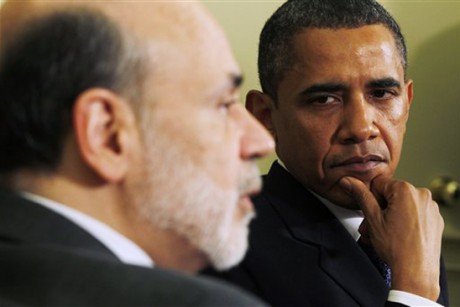01.10.2012

Analysis: Fed Sends Nearly $77 Billion to the Treasury?
original article written by Net Advisor™
Washington DC. Today it was announced that the Federal Reserve (The FED) sent nearly $77 Billion to the U.S. Treasury.
The initial headline might make one think that the FED is making money – so much that it is just spewing cash back to the U.S. Treasury – or is it?
A quick analysis suggests that there are a lot of holes in this equation. Our analysis suggests a shell game between the FED and the Treasury to artificially support the economy, and create the appearance of taking borrowed money and making it look like income. Here is a translated summary of what is really taking place.
1. The FED buys U.S. Treasuries to finance government’s deficit spending. We are told that this is for our benefit to “keep interest rates low.” Never mind the fact we (U.S. Gov) is growing the deficit faster than it is growing the economy. And we’ll just ignore the fact that government (Treasury/ FED) will have to devalue the U.S. dollar and or raise taxes, if we can’t grow the economy at a rate faster than we are borrowing from future generations.
2. U.S. Government borrows money from China (etc.) to pay interest on the debt, including paying the FED interest on U.S. Treasuries that the FED bought from the Treasury to finance its debt.
3. Next, the FED returns some of that “interest” it earned, in this case some $77 Billion. The FED just took the (borrowed) money (interest) it received from holding U.S. treasuries (after deducting its own expenses) and gave it back to the Treasury. The FED calls this, “profit?”
4. So the U.S. Treasury now has more money to spend? The Treasury was handed back most of the borrowed money (interest) it gave to the FED, and now the Treasury considers this borrowed money as “income.”
This is nothing but a shell game where government is effectively collaborating with the FED to buy its debt when no one else is willing to buy U.S. debt. Government borrows more money to pay interest on the debt. Government gets nearly a free loan (via the FED) when the FED returns some to most of the (borrowed) interest money it received from the U.S. Treasury. The Treasury then books this (originally) borrowed money from the FED as new income to spend?
Accounting Gimmicks
If you think the Treasury has unique accounting, keep in mind that in 2011, the FED changed to a controversial accounting method so that there is no way the FED can appear to be insolvent.
We are told the U.S. National Debt is now over $15 Trillion. The U.S. Treasury uses off-balance sheet and other accounting gimmicks to not count the true nature of U.S. debt. The following are just a sample of off-balance sheet items that are not counted as debt, but in fact are obligations of the U.S. government:
“According to the annual report of the Social Security system’s trustees, that program’s unfunded liabilities now exceed $18 trillion. Medicare is in even worse shape. The most recent estimate of its finances…warns that Medicare owes $36.8 trillion more in benefits that it is expected to be able to pay for.”
— Source: New York Post, 06-25-2011
In a 2011 report by Bloomberg-BusinessWeek cited:
“the net present value of all future expenses minus all future (U.S.) revenue— amounts to $211 trillion.”
— Source: Bloomberg-BusinessWeek, 07-27-2011
The question is how long will leaders in Washington allow this House of Cards to go on? Accounting gimmicks and deficit spending are not tools to turn an economy around.
___________________________________________________________________
Image credit: Charles Dharapak/ AP
Third party links may be copyright by respective owner(s).
original article content, Copyright © 2012 Net Advisor™ or Net Advisor.org™ All Rights Reserved.
___________________________________________________________________

